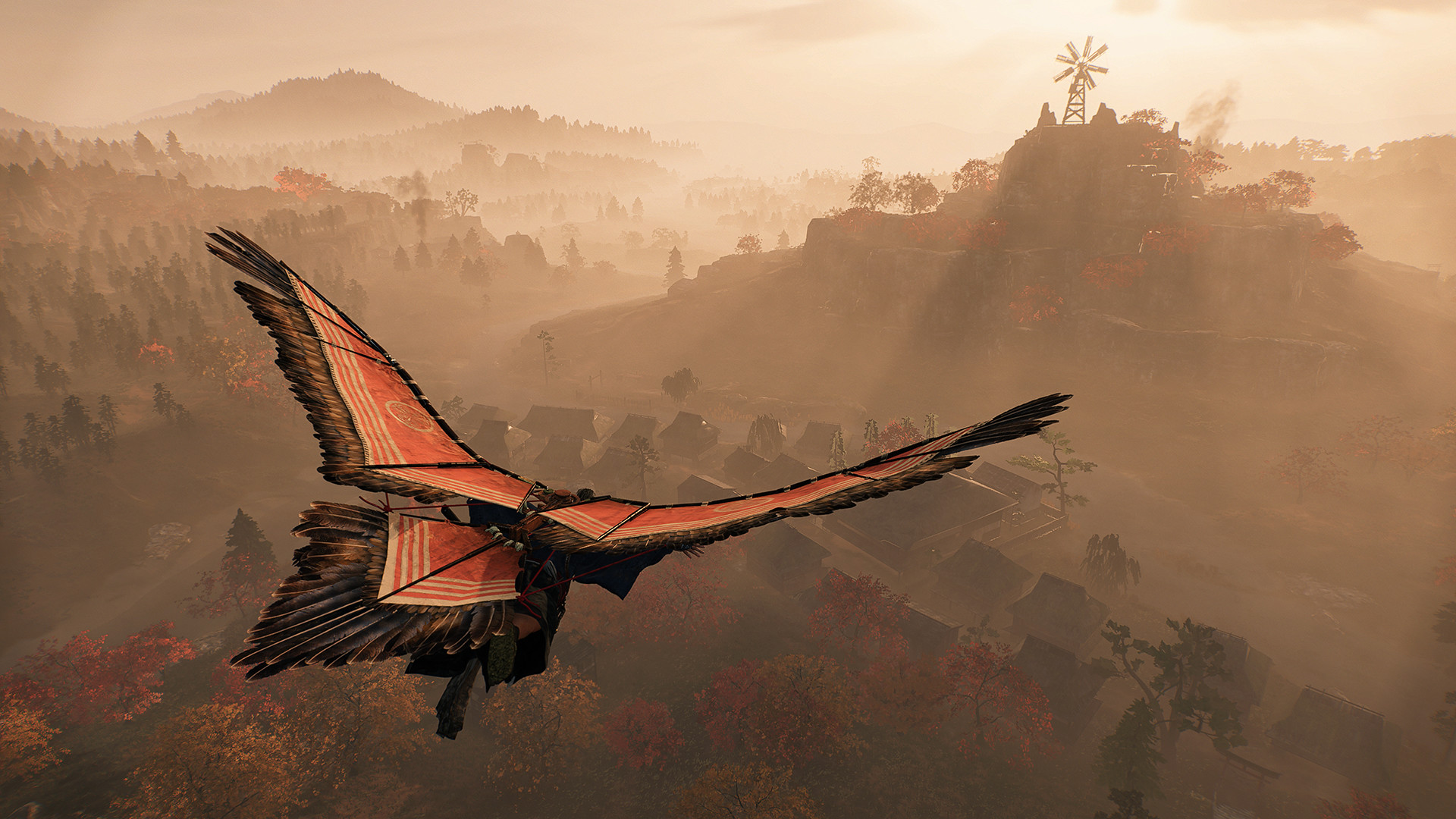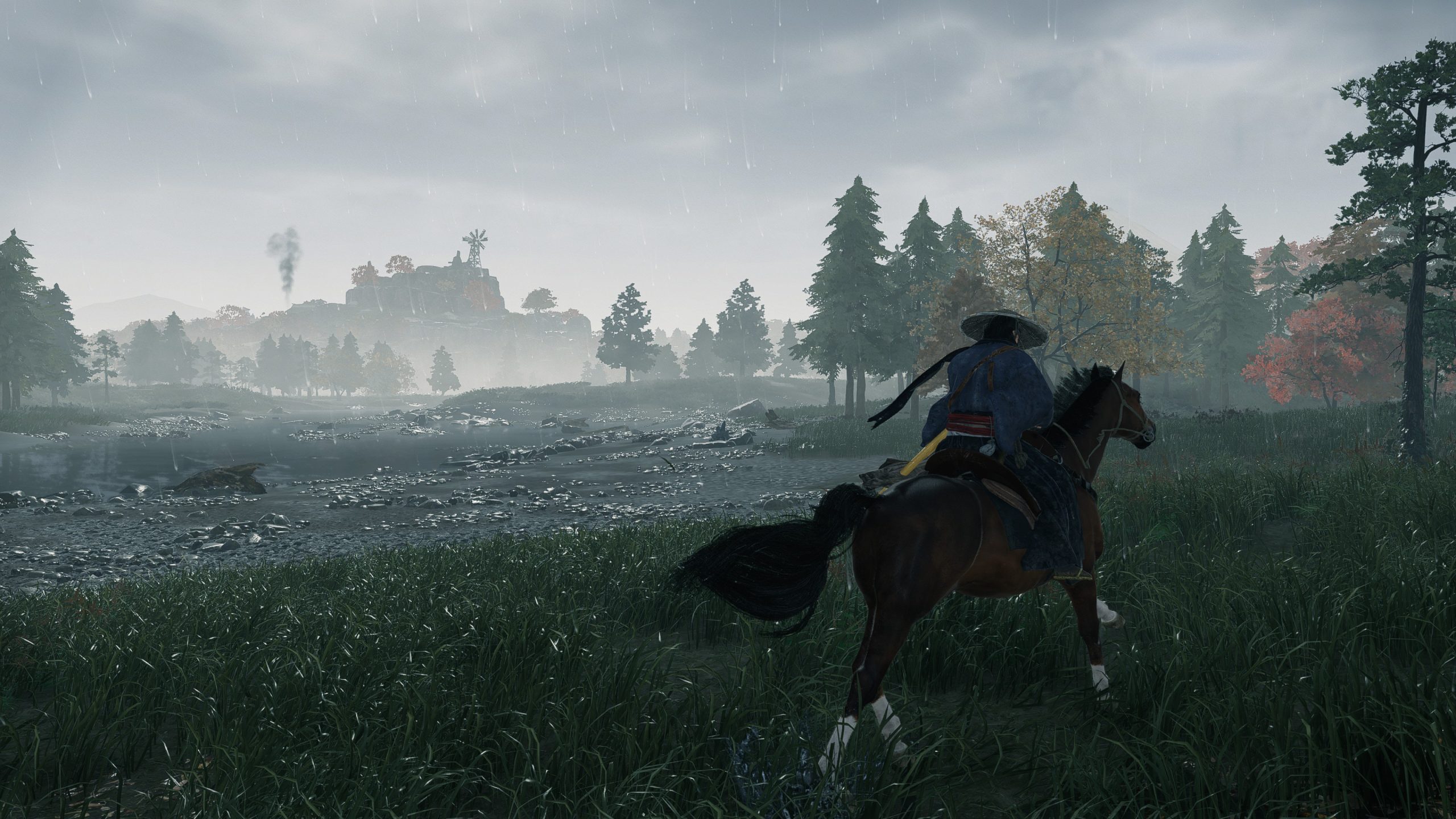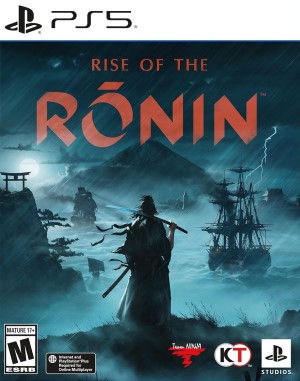
Back when it first came out on the PS5, Rise of the Ronin received a relatively lukewarm reception. At the time, it was praised for its fantastic action gameplay, traversal, and interesting setting, but as we said in our own review for the PS5 release, a lot of the storytelling and writing felt clunky. In fact, we even dinged a few points for its open world content being relatively boring.
Before we get to the game itself, however, it’s important to talk about its performance on PC. For context, I played Rise of the Ronin on a PC running on an AMD Ryzen 7 7800X3D CPU, 32 GB of DDR5-6000 RAM, and an AMD Radeon 7800 XT GPU. The game was installed on an M.2 NVMe SSD to ensure that there would be zero bottlenecks.
Despite far surpassing the recommended specs listed on the game’s Steam store page, the performance felt a bit hit or miss at times. For instance, running the game at its Ultra graphics preset delivered inconsistent performance that ranged from between 70 FPS with dips all the way down to 40 FPS at a resolution of 2560 x 1440p, which meant that I had to switch to upscaling through FSR’s Quality mode. The frame drops I got without FSR became especially obvious whenever there was any heavy foliage involved which meant that the duels in the grass became a deadly affair because of dropped frames making me drop my combos or parries. Switching FSR on, even in Quality mode, resulted in a minor downgrade to the visuals. In exchange, however, I was able to get a more stable frame rate that peaked up to 100 FPS, with rare dips down to the mid-60s.

"It’s also one of those games where a controller feels like an absolute must-have."
Thankfully, there are several graphical options that can be tweaked, and it’s not too difficult to strike the perfect balance between great, steady frame rates and excellent visuals. I had to ultimately settle on the High preset to be able to play without needing to use FSR. Even with these settings, Rise of the Ronin still ends up looking decent. Sure, there might be a few visual artefacts here and there, especially if the scene has heavy rainfall, but those kinds of things only start feeling like a legitimate problem if you want to count every pixel on your monitor.
Considering all of these factors, however, I would not recommend playing Rise of the Ronin on a handheld gaming system like the Steam Deck. Having tried it on mine, I can safely say that you’ll have to wait for quite a few optimization patches by Team Ninja before the game starts feeling even remotely playable on the handheld. Aside from the troubles with getting it to run smoothly enough on the Steam Deck, the game’s dense UI also doesn’t work too well on the much smaller display of the handheld system. While various UI elements can be disabled to help clear out some of the clutter, the in-game menus will still be painful to navigate because of small text and several stat numbers you often have to keep track of.
It’s also one of those games where a controller feels like an absolute must-have. While the default keyboard and mouse bindings are fine, the game was made from the ground-up to be played on a controller thanks to its fast-paced combat. Thankfully, you don’t have to compromise between the two, since navigating between them in the menu in the PC version feels like a breeze.
When it comes to visuals, Rise of the Ronin is still a decent looking game. Its setting of Japan during the final few days of its isolationism during the Bakumatsu period has been wonderfully rendered, and travelling through its open world still remains an absolute joy. This is helped in large part by the fact that you have so many options for traversal. Being able to seamlessly break out into a sprint and then transition into using a glider as you jump off a cliff feels excellent.

"Rise of the Ronin is still a decent looking game."
Speaking of gameplay, this is where Rise of the Ronin truly shines. The game features what feels like a more polished take on the combat and stance systems from Nioh. Fights are incredibly fast-paced, while still maintaining an air of lethality since your health bar can disappear in an instance if you manage to miss a single counter. You have two melee weapons you can switch between, as well as a pair of ranged weapons that can be used to take out enemies wandering at a distance or mix all of them to deliver a cracking combo.
Much like just about any game featuring a historic Japanese setting like Ghost of Tsushima and Sekiro: Shadows Die Twice, Rise of the Ronin’s combat also places quite a bit of emphasis on the parry mechanic. When a fight breaks out, you’ll have to wear down your enemies by depleting their Ki. This can be achieved by simply attacking them even if they block, forcing them to dodge, and most efficiently, countering their attack by using the Counterspark. Essentially, timing the Counterspark correctly with an enemy attack parries the whole thing, depletes a big chunk of their Ki, and leaves them open to a quick follow-up attack or two.
On completely depleting your opponent’s Ki, you can then hit them with a Critical Strike – an elaborate, often fun attack that takes off big chunks of their health bar. For most enemies, just getting a Critical Strike will be enough to finish them off. Boss fights, however, will need you to stay on the offensive, while also being careful enough to not miss your Counterspark or dodges.
This excellent combat is accompanied by a simplistic stealth system that thankfully doesn’t get in your way too much, since it can simply be used to finish off lone enemies. Unfortunately, all of this is bogged down by the fact that most of the open-world content in Rise of the Ronin simply doesn’t feel like it’s worth investing your time into. In the open world, most quests feel generic and doesn’t contribute much aside from marking off some completion points for a checklist that you might be familiar with in, for example, the recent Assassin’s Creed games.

"This excellent combat is accompanied by a simplistic stealth system that thankfully doesn’t get in your way too much"
This is alleviated by the fact that a some of the main story quests and side-missions will put you in bespoke levels designed for the excellent core combat, along with various tools that the player might have, like the grappling hook. These levels are also the few places where you can enable co-op, allowing up to two more players to join you in taking down your enemies. These levels are also often accompanied by boss fights which remain an overall highlight of the game thanks to their general intensity and the overall tight gameplay.
In conclusion, Rise of the Ronin is a mixed bag. The story remains a weak spot and while it starts off with some downright fantastic segments that have you sneak into a ship to assassinate Admiral Matthew Perry, things start losing steam shortly after you are given access to the open world. You originally have a singular goal in mind – reuniting with your Blade Twin – but you’ll quickly get embroiled in bigger schemes involving political machinations that revolve around the Tokugawa Shogunate and its opposing factions. While there are a few fun characters you get to meet along the way, especially historical ones like Sakamoto Ryoma and the aforementioned Matthew Perry, the story is unfortunately marred by too much clunky writing for the overall story to stick its landing.
If you can ignore the boring quest design and the uninspiring story, Rise of the Ronin on PC is a great fighting game. On the performance front, it definitely needs some optimization patches. After all, a game which isn’t really setting any graphics benchmark shouldn’t be as taxing on the hardware that I played it on.
This game was reviewed on PC.
Some of the best combat in an open world setting; the setting is interesting and unique; Excellent traversal options.
Middling PC performance; Bad writing wastes the excellent setting, bland quest design.

















